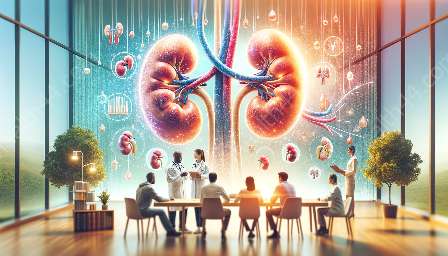Renal artery stenosis is a condition that can have significant implications for kidney health and other health conditions. In this comprehensive guide, we will explore the causes, symptoms, diagnosis, treatment, and prevention strategies for renal artery stenosis, as well as its impact on kidney disease and overall health.
Understanding Renal Artery Stenosis
Renal artery stenosis occurs when the arteries that supply blood to the kidneys become narrowed or blocked, leading to decreased blood flow to the kidneys. This can result in decreased kidney function and the activation of certain physiological pathways that may impact overall health.
Causes and Risk Factors
The most common cause of renal artery stenosis is atherosclerosis, a condition characterized by the buildup of plaque in the arteries. Other risk factors include high blood pressure, smoking, diabetes, and a family history of kidney disease. In some cases, renal artery stenosis may also be caused by fibromuscular dysplasia, a condition that leads to abnormal growth within the artery walls.
Symptoms
Many individuals with renal artery stenosis do not experience noticeable symptoms. However, in some cases, the condition can lead to high blood pressure that is difficult to control with medication, worsening kidney function, and fluid retention. Additionally, some individuals may develop episodes of acute kidney injury, characterized by sudden loss of kidney function.
Diagnosis
Diagnosing renal artery stenosis often involves a combination of medical history review, physical examination, and imaging studies. Doppler ultrasound, magnetic resonance angiography (MRA), and computed tomography angiography (CTA) are among the imaging techniques used to evaluate the blood flow to the kidneys and detect any narrowing or blockage in the renal arteries.
Connection to Kidney Disease
Renal artery stenosis can have a profound impact on kidney health. Reduced blood flow to the kidneys can lead to chronic kidney disease, a condition characterized by the progressive loss of kidney function. In some cases, renal artery stenosis can also lead to acute kidney injury, which may require immediate medical attention.
Treatment Approaches
The treatment of renal artery stenosis aims to improve blood flow to the kidneys and manage associated health conditions. Depending on the severity of the stenosis and the patient's overall health, treatment options may include medication to control blood pressure, angioplasty with or without stent placement to restore blood flow, or surgical revascularization procedures.
Prevention and Lifestyle Considerations
Preventing renal artery stenosis involves addressing risk factors such as high blood pressure, smoking, and high cholesterol. Eating a healthy diet, participating in regular physical activity, and managing chronic conditions effectively can all contribute to lowering the risk of developing renal artery stenosis. It's also essential to monitor kidney function regularly, particularly for individuals with known risk factors or a family history of kidney disease.
Link to Other Health Conditions
Beyond its impact on kidney health, renal artery stenosis can be associated with other health conditions. Individuals with renal artery stenosis may be at increased risk for cardiovascular disease, stroke, and peripheral artery disease. This underlines the importance of comprehensive care that addresses both the renal artery stenosis itself and its potential impact on overall health.
Final Thoughts
Renal artery stenosis is a complex condition that warrants careful consideration in the context of kidney disease and overall health. By understanding its causes, symptoms, diagnosis, treatment, and prevention strategies, individuals and healthcare providers can work together to address this condition effectively and minimize its impact.


